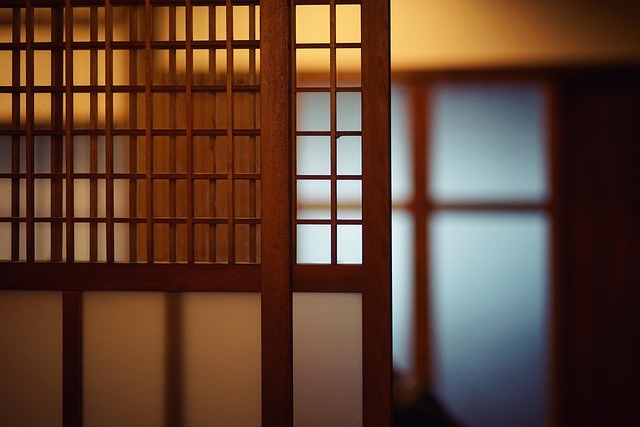The concept of the panel house has evolved from a utilitarian housing solution into a celebrated form of modern architectural expression. By embracing modularity and precision fabrication, designers now treat each panel not merely as a structural component, but as a canvas that can convey texture, rhythm, and even storytelling. The result is a living architecture that blurs the lines between construction technique and visual art, offering residents a built environment that is as inspiring as it is functional.
Historical Roots of the Panel House
Panel houses first appeared in the post‑war era, when rapid construction and cost efficiency were paramount. Prefabricated panels of wood, steel, or concrete were mass‑produced in factories and then transported to sites for quick assembly. While early examples focused on speed and economy, the very repeatable geometry began to hint at aesthetic possibilities. Over the decades, architects and engineers recognized that the modular nature of panels could be harnessed to explore form, proportion, and light in novel ways.
- Early 20th‑century mass housing projects in Europe and the United States.
- Adoption of steel‑frame panels during the industrial boom.
- Reinvention of the panel house in the 1980s with advanced composite materials.
Core Architectural Principles
At the heart of panel house design lies the principle of modularity. By breaking a building into discrete, repeatable units, architects can simplify construction while retaining flexibility. This modular mindset also encourages the use of standardised dimensions, which in turn reduces waste and improves quality control. The panel becomes both a structural element and a visual motif, providing rhythm to façades and a sense of continuity across a complex.
“Modularity is the modern architect’s new palette—each panel a stroke that contributes to a cohesive masterpiece.”
Materials and Fabrication Techniques
Today’s panel houses benefit from a diverse palette of materials. High‑strength engineered timber allows for lightweight yet durable construction, while glass‑fibre reinforced polymer (GFRP) panels offer superior corrosion resistance and flexibility in shaping. Concrete panels, often produced using vacuum‑formed or additive manufacturing methods, can achieve complex geometries that were previously impractical.
- Precision CNC machining ensures tight tolerances.
- Laser cutting allows for intricate cutouts and ornamental details.
- Smart coatings can adapt to environmental conditions, providing passive thermal regulation.
Design Aesthetics and Artistic Expression
The panel house is inherently adaptable to diverse stylistic languages. By varying panel thickness, surface texture, and alignment, architects can create facades that range from minimalist glass skins to sculptural, layered mosaics. Lighting plays a pivotal role; internal cavities within panels can house LED strips that illuminate patterns, turning a building into a dynamic work of art that changes with time of day.
- Geometric patterns echo ancient tessellations.
- Organic forms mimic natural growth processes.
- Interactive surfaces respond to touch or motion sensors.
Case Study: The Harmony Residence
The Harmony Residence, completed in 2019 in Oslo, exemplifies how panel houses can become iconic pieces of architectural art. Designed by the studio Axiom, the building uses custom‑milled steel panels that interlock to form a spiraling façade. Each panel is etched with a subtle, repeating motif inspired by Scandinavian folk patterns. The result is a structure that appears both grounded in tradition and soaring toward the future.
“Harmony Residence demonstrates that modular construction can be both efficient and visually compelling.” – Lead Architect, Axiom
Sustainability and Environmental Impact
Panel houses contribute significantly to sustainable building practices. Prefabrication reduces on‑site waste and limits construction noise, while the uniformity of panels allows for precise thermal insulation. Moreover, the use of recyclable or biodegradable materials, such as cross‑laminated timber or bio‑based composites, further minimizes the ecological footprint. Some projects even integrate photovoltaic panels into the façade, turning the building itself into an energy generator.
- Life‑cycle assessments show reduced carbon emissions.
- Smart ventilation systems reduce HVAC demand.
- Rainwater harvesting integrated within panel cavities.
Integration into Urban Fabric
Panel houses can seamlessly adapt to diverse urban contexts. In dense city centers, modular units can be stacked vertically to create high‑rise living spaces with a unified aesthetic. In suburban settings, panels can be arranged to produce low‑rise terraces that reflect local architectural traditions. Their flexibility allows architects to design streetscapes where individual units converse through shared patterns, creating a harmonious streetscape that encourages community interaction.
Emerging Trends and Future Directions
Looking ahead, the panel house is poised to embrace digital fabrication, 3D printing, and autonomous assembly robots. These technologies will allow for even greater customization and complexity, turning each panel into a bespoke component tailored to the occupant’s needs. Additionally, the rise of parametric design tools will enable architects to explore complex geometries that respond to environmental data in real time.
- Parametric façades that adjust shading according to sun angles.
- Bioclimatic panels that incorporate living walls.
- Integration with smart city infrastructures for data‑driven design.
Conclusion
From its humble origins as a quick‑build solution to its current status as a canvas for modern architectural art, the panel house exemplifies how engineering precision and artistic vision can converge. By embracing modularity, advanced materials, and innovative fabrication methods, architects are reshaping the built environment into living sculptures that inspire, sustain, and connect communities. The panel house stands as a testament to the power of design to transform everyday structures into enduring works of art.




